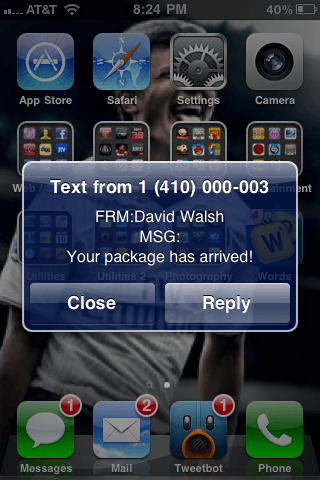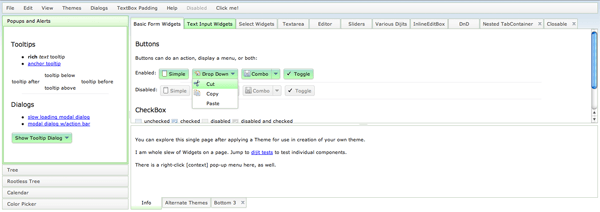Get a Python Package Version
Part of maintaining a Django-based application like MDN's kuma is ensuring Python packages are up to date. I was recently testing an upgrade on a remote system and needed to ensure that a given Python package was at the version number it should be. Here's how I retrieved the package version:
import nose # Nose is a test utility. Replace with your desired package here.
nose.__version__
# Output: 0.3.1
The __version__ property returns the exact version number for a Python package. Some Python packages use a VERSION property as well, but __version__ should be the most reliable.
![Send Text Messages with PHP]()
Kids these days, I tell ya. All they care about is the technology. The video games. The bottled water. Oh, and the texting, always the texting. Back in my day, all we had was...OK, I had all of these things too. But I still don't get...
![Create a CSS Cube]()
CSS cubes really showcase what CSS has become over the years, evolving from simple color and dimension directives to a language capable of creating deep, creative visuals. Add animation and you've got something really neat. Unfortunately each CSS cube tutorial I've read is a bit...
![Sexy Album Art with MooTools or jQuery]()
The way that album information displays is usually insanely boring. Music is supposed to be fun and moving, right? Luckily MooTools and jQuery allow us to communicate that creativity on the web.
The XHTML
A few structure DIVs and the album information.
The CSS
The CSS...
![Create Your Own Dijit CSS Theme with LESS CSS]()
The Dojo Toolkit seems to just get better and better. One of the new additions in Dojo 1.6 was the use of LESS CSS to create Dijit themes. The move to using LESS is a brilliant one because it makes creating your own Dijit theme...





Every once in a while a package might not define either
VERSIONor__version__, since they’re conventions, not required. You can always get the installed version with pkg_resources, though:>>> import pkg_resources >>> pkg_resources.get_distribution("PIL").version '1.1.7'@James,
__version__is recommended by PEP 396